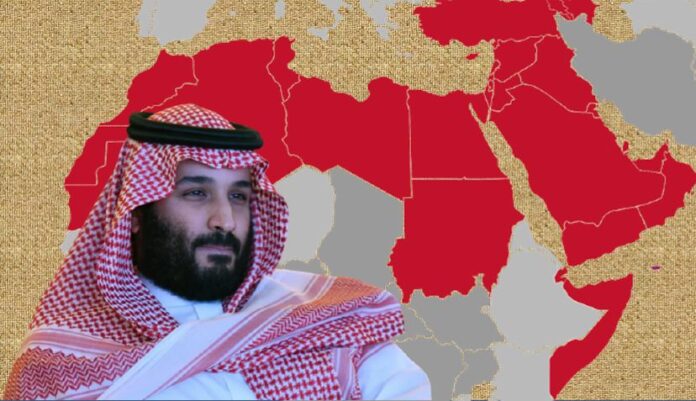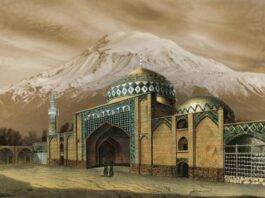By Nadeem Abbas
Saudi Crown Prince diplomacy has gone into overdrive. Mohammed bin Salman (MBS) is in France to participate in the Summit for a New Global Financial Pact and hopes to drum up support for Saudi Arabia’s candidacy to host the Expo 2030 world’s fair. Earlier this month, US Secretary of State Anthony Blinken was in Riyadh trying to re-establish engagement with the Saudis after US President Joe Biden’s not-so-successful visit last year. Meanwhile, the Saudis have continued their engagement with Russia and even Venezuela’s President Nicolas Maduro visited Saudi Arabia and met with the crown prince before Blinken’s visit.
Mohammed bin Salman, who was ostracized by the western world after the killing of Saudi journalist Jamal Khashoggi at the kingdom’s consulate in Istanbul, ostensibly seen at the peak of his political and economic wisdom. The US and Saudi relations were strained when Biden in his denunciation of MBS, suggested during his 2019 election campaign that he would treat Riyadh like “the pariah that they are” if he was elected. Biden was positioning himself against his predecessor Donald Trump’s nonchalant attitude toward human rights violations by the Saudi regime and soon after his election. After election, US announced a visa ban on around 76 Saudi citizens.
Since then the relationship between Riyadh and Washington has struggled to get back on an even keel despite Biden visiting Saudi Arabia in July 2022. During his visit Riyadh refused to accept the US request to reduce oil prices. Meanwhile, Beijing lost no time in filling the void left by the US. The most remarkable aspect of the Chinese outreach was to broker peace deal in April between arch rivals Saudi Arabia and Iran, allowing for the reopening of embassies, resumption of direct flights and restarting of security and trade accords. China’s clout in the Middle East has been growing, as it looks to enhance its presence in the region from where it imports most of its oil. At the same time, the US interest in the region was dwindling. Saudi Arabia, however, is not ready to put all its eggs in one basket.
During Blinken’s visit to Riyadh, Saudi Arabia’s Foreign Minister Prince Faisal bin Farhan made it clear that the Saudis would prefer aid for their civilian nuclear programme to come from the US as there are other powers willing to help Riyadh. The message from Riyadh is clear Saudi Arabia is recalibrating its ties with the US as MBS searches for a new global identity with socio-economic changes.
In this age of global fluidity, Saudi Arab is giving a foreign policy that will allow it to keep its options open. Its ties with India have also seen a strengthening in recent years. The geopolitics of Middle East is in a churn and old assumptions are no longer valid in assessing the changes in the region. Saudi Arabia’s foreign policy transformation is perhaps the most visible manifestation of this churn.
On 10 March, representatives of Iran and Saudi Arabia, who had been meeting secretly for five days in the Chinese capital Beijing, announced a Chinese-sponsored agreement to restore diplomatic relations between the two countries. Tensions between the regional rivals date back more than four decades, persisting at lower levels through an earlier period of détente in the 1990s and then heightening in the past two decades. Riyadh formally severed ties with Tehran seven years ago. An important question is whether and to what extent the Beijing agreement will contribute to resolving, conflicts elsewhere in the Middle East. The competing regional agendas of Riyadh and Tehran have compounded devastating wars in Yemen and Syria, and continue to fuel instability in Lebanon and Iraq. Several Gulf Arab states have long been concerned about direct threats from, or even attacks by, Iranian proxies, as well as alleged Iranian support for dissident movements. Israel, meanwhile, sees Iran’s nuclear program as an existential threat. From its side, Tehran accuses Israel of sabotaging its nuclear program, and Saudi Arabia of backing ethnic opposition groups in Kordestan, Baluchistan and other troubled provinces, along with hostile Iranian diaspora media.
While reducing the intensity of regional competition may help redirect political energy to the core internal conflicts, the prospect of swift solutions remains slim. The Saudi-Iranian agreement provides a roadmap for re-establishing diplomatic ties within two months. Beyond improving bilateral relations, the agreement may also help lessen tensions in the broader Gulf region. Officials in the United Arab Emirates, Kuwait and Oman all lauded the deal as a move toward stability and prosperity that will benefit all sides.
The Saudi-Iranian deal has the potential to lower tensions in Iraq. Baghdad has for some time been trying to bring its two assertive neighbours closer together. Iran is the bigger of the two – its border with Iraq is twice as long as Saudi Arabia’s – and it enjoys close religious, economic and cultural ties with many Iraqis. It has substantial political clout as well: Tehran exploited the chaos following the 2003 U.S. invasion of Iraq to spread its influence, especially among the majority Shiite population and the ruling Islamist parties representing them. What is more, Iran’s Islamic Revolutionary Guard Corps supports a number of armed groups that operate outside the Iraqi state’s full control. These groups have periodically fired rockets at residual U.S. forces in the country, and they may be responsible for attacks on Saudi Arabia in 2019 and 2021. Iran and Saudi Arab ties will help energy-hungry Pakistan to revive its gas pipeline project with Iran as Pakistan could not complete it due to Riyadh pressure and US sanctions.




